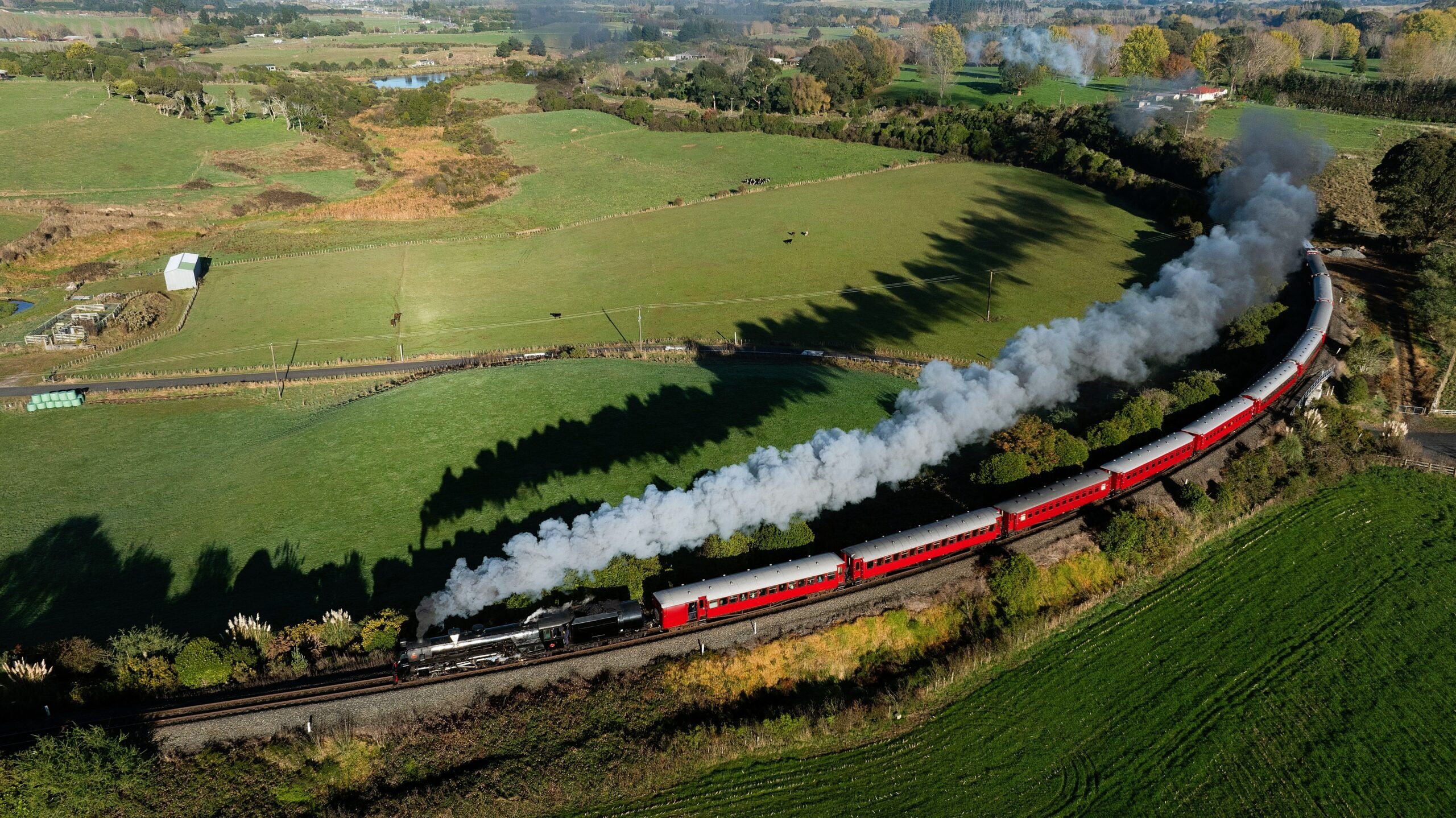
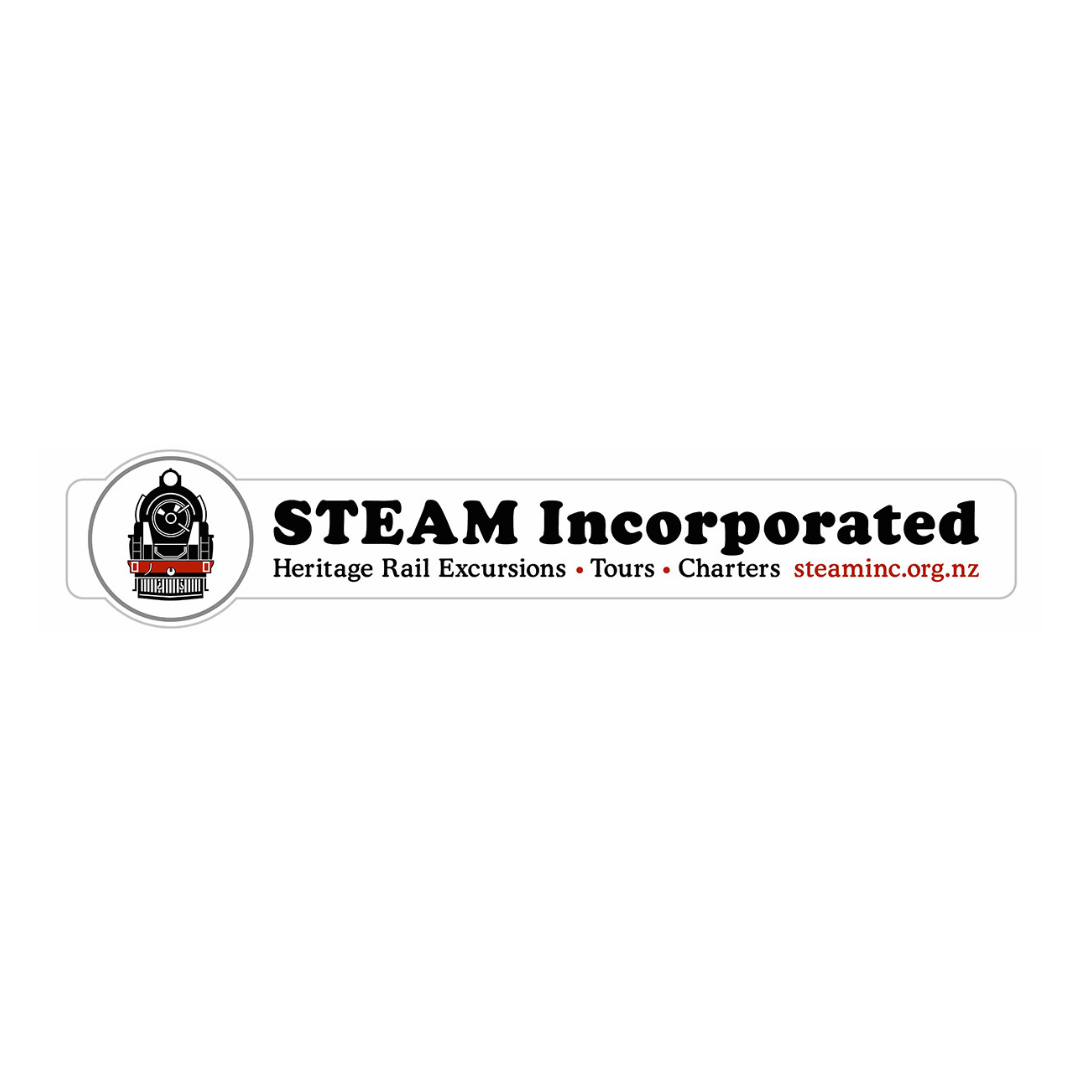
This grand tour through the heart of England and Wales celebrates these three great modes of transport that have helped to make the UK what it is today. On board all manner of trains and boats, you’ll visit some of the most famous and significant ports and railways in the world, great museums, and attend the world-renowned Duxford Air Show. Add to that stunning scenery, astounding architecture, and a vast eclectic mix of Britain’s cultural icons, this tour promises to transport you to another time. Along the way, you’ll enjoy the best that Britain has to offer - river cruises and numerous heritage steam train journeys; visit country houses, castles, cathedrals, and colleges; enjoy quality, centrally located hotels; and dine in carefully selected restaurants - all in fully escorted comfort.
Make your way to our hotel, conveniently located in the vibrant Gloucester Road area, opposite the Tube station. Check in is available from 3.00pm
You’ll meet your Tour Leader and fellow travellers with a welcome drink in the bar at 6.00pm before heading out for a celebratory welcome dinner and tour briefing.
Overnight: The Bailey’s Hotel, London (D)
This morning after breakfast, our adventure begins with a walk across the street and into the Underground to explore London by rail and river. The Docklands Light Railway whips us through the new suburbs created from the restored industrial areas down along the Thames all the way to Greenwich, a historic borough famous for its maritime history and scientific significance.
Greenwich is home to numerous icons. The Royal Observatory, founded in 1675 by King Charles II remains a key site for astronomy and navigation history and is home to Prime Meridian (0° longitude), the line that defines Greenwich Mean Time (GMT), the global standard for timekeeping established in 1851. The National Maritime Museum showcases Britain’s naval past, including artifacts from the Age of Sail – the Cutty Sark, a preserved 19th-century clipper ship, is a major attraction, reflecting Greenwich’s role as a hub for maritime trade.
Greenwich Park, one of London’s oldest royal parks, houses the Queen’s House (a former royal residence) and was a favorite of Henry VIII; and the Old Royal Naval College, a UNESCO World Heritage Site, is a baroque masterpiece designed by Sir Christopher Wren featuring the Painted Hall, often called the “Sistine Chapel of the UK” for its ornate ceiling.
Upon arrival at Greenwich, your special combination ticket will give you access to all the major attractions, museums, and galleries of the National Maritime Museum and Royal Observatory. While there, we’ll visit the Cutty Sark and there’ll be plenty of free time to wander the historic Naval College, explore the town’s bustling market dating back to the 14th century, and enjoy lunch at leisure.
We’ll regroup in the late afternoon for an early dinner at a pub at Greenwich before returning to our hotel by ferry along the Thames soaking up the sights of this great city from the vantage point of its iconic river.
Overnight: The Bailey’s Hotel, London (B, D)
Today is yours – a free day in and around London to explore the many options on offer in this grand city. Our hotel is conveniently located right next to the Gloucester Road Tube station, which is just a few short stops along the Circle Line to central London, so there is no end of possibilities!
You may wish to take an excursion to the extraordinary collection at RAF Hendon Aircraft Museum or visit the Imperial War Museum. Alternatively, you may like to take advantage of the wonderful museums on offer, or explore the world of the British Royal Family – it’s all on your doorstep!
Overnight: The Bailey’s Hotel, London (B)
This morning after breakfast and check out, we’ll leave our luggage with our private courier for separate transport to Portsmouth while we travel first class on the fast-express service operated by Southwest Trains down the old London and Southwestern Railway from Waterloo to Portsmouth.
Known as the “Great Waterfront City,” Portsmouth has been a key naval base for centuries and is steeped in maritime history. Most significantly, it’s home to Portsmouth Historic Dockyard, housing iconic ships like HMS Victory (Lord Nelson’s flagship at Trafalgar) and HMS Warrior (the UK’s first ironclad warship). The Mary Rose, Henry VIII’s 16th-century warship, is another highlight, raised from the Solent in 1982. The city remains a major base for the Royal Navy, with a third of the fleet stationed here, and the National Museum of the Royal Navy showcases this legacy with artifacts and stories from Britain’s naval past. Portsmouth’s strategic importance led to extensive defence fortifications, like Southsea Castle (built by Henry VIII) and the Palmerston Forts, designed to protect against invasions. A fun fact is that it’s also the 1812 birthplace of Charles Dickens.
Upon arrival in Portsmouth, there’ll be time for lunch at leisure before we embark on an afternoon revolving at your own pace around the many highlights of Portsmouth with your “All Areas” pass, including the fascinating and extensive Portsmouth Historic Dockyard. Your experienced Tour Leader, Rob, will be on hand to help guide and illuminate the amazing collection of memorabilia, and themed museum exhibits as well as many iconic ships, including the famous Victory and HMS Warrior.
We’ll transfer to our hotel in the late afternoon to be reunited with our luggage and check in. Our home for the next two nights is a historic Edwardian-era hotel originally built as a private residence in 1861 by architect Augustus Livesay for Sir John and Lady Morris, and later converted into one of Portsmouth’s first hotels in 1865. After a devastating fire in 1901, it was rebuilt in the grand Edwardian Baroque style with brown terracotta and neoclassical flourishes, and more recently, has undergone a multi-million-pound restoration to restore its former glory, uncovering magnificent original features.
Dinner tonight will be in the grand dining room of the historic hotel.
Overnight: The Queen’s Hotel, Portsmouth (B, D)
This morning after breakfast, we’ll transfer by private coach to the port where a catamaran ferry will be standing by to take us across to the Isle of Wight. The ferry connects with the island’s local electric train (vintage London Underground rolling stock) and we’ll climb on board for the short run across the island to the terminus station of the Isle of Wight Steam Railway at Smallbrook Junction. This authentic heritage railway takes you by steam on the idyllic little line to the railway’s depot at Haven Street Station. You’ll travel in meticulously restored Victorian and Edwardian carriages, pulled by historic steam locomotives, some dating back to 1876, and the journey evokes the sights, sounds, and smells of a bygone era, offering views of rolling hills, ancient woodlands, and sometimes some wildlife like red squirrels and deer. Upon arrival at Haven Street Station, there’ll be time to have some lunch at leisure at the railway’s well-stocked café.
After lunch, we’ll continue to the end of the island’s electric railway line where we’ll meet our private coach to return us to the port to connect with the ferry back to Portsmouth. Our journey back takes in the famous chalk cliffs of the southern coast, the striking geological formation known as “The Needles” – one of the island’s most iconic landmarks, and travels through the towns Newport and Ryde. On the way, we’ll pause near East Cowes to visit Osborne House, one of Queen Victoria’s favourite residences, and the house in which she died in 1901. Designed by Prince Albert in collaboration with architect Thomas Cubitt, and inspired by Italian Renaissance villas, it was built between 1845 and 1851 as a summer retreat for the Royal Family. Renowned for its Italianate architecture, lavish interiors, and historical significance, Osborne House offers a glimpse into Victorian royal life, set within beautifully landscaped gardens and a private beach.
It’s then on to the port for the return ferry to Portsmouth and our hotel for an evening at leisure in this charming city.
Overnight: The Queen’s Hotel, Portsmouth (B)
This morning after breakfast and checking out, we’ll board our private coach for the scenic journey to Bristol, with stops in Stonehenge near Amesbury in Wiltshire, and Bath.
Stonehenge is one of the world’s most iconic prehistoric monuments, renowned for its massive standing stones, mysterious origins, and cultural significance. A UNESCO World Heritage Site and built in phases between approximately 3000 BCE and 2000 BCE during the late Neolithic and early Bronze Age, it consists of an outer ring of sarsen stones (up to 10 metres tall and weighing up to 45 tonnes) topped with lintels, an inner horseshoe of trilithons, and smaller bluestones. Questions persist about how the stones were transported – the sarsens were sourced from Marlborough Downs, some 32 kilometres away, but the bluestones were transported 225 -320 kilometres from the Preseli Hills in Wales. While much about Stonehenge remains unexplained, the new museum and gallery add a wonderful insight to this iconic site. You’ll have time to explore this extraordinary place on a well curated walking path, and the cafe offers a great coffee.
We’ll then journey a short distance to the charming town of Devizes, a historic market town founded around a Norman castle in the 11th century and known for its rich history and Georgian architecture. We’ll stop here for lunch at leisure and a chance to wander around the delightful shops and a lovely museum showcasing the treasures that have been found in the area.
After lunch, we’ll venture the short distance to the magnificent UNESCO World Heritage listed historic city of Bath, renowned for its well-preserved Roman baths and the stunning Georgian architecture on show everywhere. Founded by the Romans around 60 CE, Bath became a religious and social hub centered on its thermal springs. In the 18th century, it flourished as a fashionable spa town, attracting the elite with its elegant architecture and social scene, much of which survives today.
You’ll enjoy a privately guided tour of this ancient and colourful city, including the city’s centrepiece, the remarkably preserved Roman Baths, built 60–70 CE, a marvel of Roman engineering.
It’s then on to Bristol to check into our hotel and enjoy dinner together in the city.
Overnight:Radisson Blu Hotel, Bristol (B, D)
This morning after breakfast, we’ll take an excursion to Yeovilton, an hour down the road, to the Fleet Air Arm Museum, Europe’s largest naval aviation museum, part of the National Museum of the Royal Navy, with over 100 aircraft, 2 million records, and 30,000 artifacts. It traces the history of British naval aviation from 1909 to the present, covering the Royal Naval Air Service and Fleet Air Arm. Highlights include the Battle of Taranto (1940), a pivotal WWII naval air strike, and the Falklands War (1982), with aircraft like the Sea Harrier. The museum also houses the first British Concorde (002) and unique aircraft like the Supermarine Seafire.
Upon our return to Bristol, the afternoon and evening is yours at leisure to explore at your own pace.
Founded before the 11th century, Bristol grew as a medieval port, thriving on trade (wool, wine, and later, the transatlantic slave trade). In the 19th century, it became an engineering powerhouse, led by figures like Isambard Kingdom Brunel. Today, this blend of a rich maritime and trade history with Georgian and Victorian architecture, and its fame for street art by artists like Banksy, makes Bristol a fascinating city.
Overnight: Radisson Blu Hotel, Bristol (B)
Bristol’s port drove its wealth in the 17th–18th centuries, although its role in the slave trade (transporting ~500,000 enslaved people) is a sombre legacy. The port later supported Brunel’s engineering feats, like the SS Great Britain. Brunel’s contributions – bridge, ship, and Great Western Railway – made Bristol an engineering hub, paralleling the Victorian era of Thomas Cubitt’s architectural work.
This morning after breakfast and check out, we’ll embark on a privately guided city tour with a local expert, who will not only introduce us to some of Bristol’s sites and attractions but reveal many interesting stories of life in and around Bristol over the years. Our tour is an homage to Brunel and includes the famous Docks; Brunel’s spectacular Clifton Suspension Bridge, spanning 214 metres over the Avon Gorge, and Temple Meads Station, a historic railway hub that’s still one of the UK’s oldest and busiest stations, serving as a gateway to the West Country.
Staying with Brunel, we’ll take a tour in and around the magnificent and historic SS Great Britain – Brunel’s 1843 steamship, the world’s first iron-hulled, screw-propelled ocean liner, now a museum. This ship was the first of its kind and became one of the most revolutionary and popular vessels ever built.
We’ll depart Bristol on our private coach for the journey to Telford, our home for the next two nights, stopping at Swindon to visit ‘Steam’, an excellent museum celebrating the Great Western Railway, housed inside the original workshop buildings. A light lunch is provided at the museum before we continue north across the rolling rural scenery of Gloucester, Hereford and onto Shropshire, to Telford, a modern town with a rich industrial heritage, including the UNESCO World Heritage Site of Ironbridge Gorge and the Iron Bridge, built in 1779 and often regarded as the birthplace of the Industrial Revolution.
After checking in to our hotel, there’ll be time to freshen up before dinner in the hotel restaurant.
Overnight: Holiday Inn Telford-Ironbridge, Telford (B, L, D)
This morning after breakfast, we’ll make the short journey to Bridgnorth, home of the Severn Valley Railway, one of the UK’s premier heritage railways. A heritage steam railway running 26 kilometres along the Severn Valley, it’s renowned for its preserved steam and diesel locomotives, vintage carriages, and beautiful picturesque route. Originally part of the Great Western Railway network, the line opened in 1862 to link Shrewsbury and Hartlebury, running through 15 busy stations, but faced closure in 1963 due to the Beeching cuts. Preserved by enthusiasts after an idea over a few beers in the pub grew into a solid rescue plan, the Severn Valley Railway reopened as a heritage railway in 1970 and now operates as a registered charity, run largely by volunteers. Since then, it has been used as a filming location for several movies and UK TV series, so you may even recognise it when you get there!
You’ll have the opportunity to ride the line in lovingly-restored period carriages, hauled by vintage steam and diesel trains, visiting beautiful riverside towns and villages along the way, and even having time for a riverside walk or two along the line. There’s also the ‘Engine House’ museum at Highley Station where you can get up close and personal with several steam locomotives. You’ll have plenty of options to have some lunch on your own, do some shopping and of course play trains.
Upon our return to Telford, your evening will be at leisure.
Overnight: Holiday Inn Telford-Ironbridge, Telford (B)
This morning after breakfast and checking out, we’ll reunite with our private coach and continue the scenic journey to the North Wales seaside town of Llandudno. On the way, we’ll take some time for lunch at leisure around the World Heritage-listed Conwy Castle before embarking on a guided tour of this magnificent 13th-century fortress that still towers over the town. Built by King Edward I between 1283 and 1287 as part of his campaign to conquer Wales, Conwy Castle was one of his “Iron Ring” fortresses to control the Welsh princes. Designed by master architect James of St George,it played key roles in conflicts, including Owain Glyndŵr’s rebellion (1401) and the English Civil War (1640s), and is considered to be one of the finest examples of 13th-century military architecture in Europe, taking its place alongside Edward’s other great castles at Beaumaris, Harlech and Caernarfon.
We’ll arrive in Llandudno later in the afternoon with an option and enjoy an excursion on the Great Orme Tramway, a historic cable-hauled funicular railway and Britain’s only remaining cable-operated street tramway. Construction began in 1901, with the first passengers riding on July 31, 1902, accompanied by the town band playing “God Save the King.” Initially steam-powered, it switched to electric motors in 1958 and remains a cherished heritage site. One of only three surviving cable-hauled street tramways globally (alongside Lisbon and Viseu, Portugal), it’s an engineering marvel, with the lower section uniquely running on public roads, and offers passengers a nostalgic journey in restored tramcars named after saints as it climbs 1500 metres through the Great Orme Country Park and Nature Reserve to the Great Orme’s spectacular summit.
It’s then on to our hotel for check in and dinner.
Overnight: Waterloo Hotel, Betws-y-Coed (B, D)
Today we’ll embark on two of the best journeys on the railways of North Wales – the Welsh Highland Railway and the famous Ffestiniog Railway.
After breakfast this morning, our coach will transport us to Caernarfon to meet the Welsh Highland Railway where you’ll jump on board to ‘steam’ down the line to Porthmadog. The line runs from through the stunning landscapes of Snowdonia National Park, and is considered one of Britain’s most scenic narrow-gauge railways. Originally opened in 1877–1881 to serve slate quarries and passenger transport, the railway closed in 1937 due to declining trade. Rebuilt and reopened in stages (1997–2011), it’s now a heritage line preserving Welsh industrial history.
At Porthmadog, we’ll jump on the famous Ffestiniog Railway to Blaenau Ffestiniog. Established in 1832, it is one of the world’s oldest narrow-gauge railways and is renowned for its steam locomotives, scenic beauty, and engineering marvels like the unique spiral at Dduallt, the Moelwyn Tunnel, and the Cob, a sea embankment at Porthmadog. Its double Fairlie locomotives are engineering icons, designed for tight curves. This great journey climbs over 213 metres from sea level into the mountains, through tranquil pastures and magnificent forests, past lakes and waterfalls, and around tight bends, including a complete spiral – clinging to the side of the mountain or tunneling through it. You’ll then have time for lunch at leisure before the next leg takes us to Blaenau Ffestiniog where our coach will be waiting to transfer us back to the hotel.
Upon arrival back at the hotel, your evening will be at leisure.
Overnight: Waterloo Hotel, Betws-y-Coed (B)
This morning after breakfast and checking out, we’ll travel by coach to Colwyn Bay to commence our journey by train to Merseyside and the Port city of Liverpool, home to the Beatles.
Upon arrival, our local guide will meet us and lead us on a tour of the city, including its UNESCO World Heritage waterfront. A major port since the 18th century, Liverpool was a gateway for global trade, migration, and cultural exchange during the British Empire and thrived on trade – cotton, sugar, and the transatlantic slave trade, handling approximately 40% of the global total. This brought African, Caribbean, and European influences, and the city also welcomed Irish, Chinese, Welsh, and other communities, shaping its demographic and cultural fabric into the vibrant, diverse city we know today. Liverpool is home to Europe’s oldest Chinese community, established in the 1860s by sailors from Shanghai and Canton working for shipping lines like Blue Funnel, its black Black and African-Caribbean community dates back to the 1730s, the Irish community swelled due to 19th-century migration during the Great Famine resulting in Liverpool now having the highest irish ancestry in the UK, and the city is home to home to England’s first mosque.
Our tour will include an exploration of the spectacular Liverpool Anglican Cathedral, one of Europe’s largest, and delve into the story of the Mersey Beat on a guided tour aboard the famous Mersey Ferry before setting you free for lunch at leisure.
After lunch we’ll transfer to our hotel and check in, leaving you free for your own exploration before regrouping in the early evening to go for dinner at a local favourite.
Overnight: Hard Days Night Hotel, Liverpool (B, D)
This morning after breakfast and checking out, it’s off to the railway station for the spectacular train journey via Manchester to one of England’s finest and most beautiful historic cities, the famous walled Minster City of York, renowned for its rich heritage, spanning Roman, Viking, and medieval eras, and its well-preserved city walls, cathedral, and railway history. Founded as Eboracum by the Romans in 71 AD, York was a major military and administrative centre, and where Emperor Constantine was proclaimed in 306 AD. It became Jorvik under Viking rule (9th–10th centuries) and a medieval powerhouse with York Minster, funded by wool and trade. After the Vikings lost control of Jorvik in 954 AD to the Anglo-Saxon king Eadred, the name began to shift, and by the late 10th and early 11th centuries,York became the dominant name in English records.
The Manchester to York rail route, opened in 1839, was developed to connect industrial Manchester with Yorkshire’s wool and trade centres, playing a key role in the Industrial Revolution, transporting goods and workers. The scenic route crosses the Pennines and through the Calder Valley, travelling through historic tunnels and over viaducts, including the 1840s built Lisbon Viaduct near Hebden Bridge. You’ll be able to buy lunch and snacks on board.
Upon arrival in York, we’ll have a chance to marvel at the magnificent curved structure and hear about its history. When it opened in 1877 after moving from its original shed outside the walls, it was the largest railway station in the world with 13 platforms, a train shed, station buildings and a hotel. By 1888, there were 294 trains stopping here every day, and another two platforms were added in 1909 to accommodate the growing demand. The station sustained extensive damage from German bombers during the Second World War, resulting in significant repairs being completed in 1947. York remains a key rail junction today and the station became a Grade 2 listed building in 1968.
We’ll then head off and enjoy a traditional afternoon tea at one of York’s famed Tea Rooms, before embarking on an afternoon walking tour of this interesting city with our local guide. After checking into our hotel, there’ll be some time to freshen up before regrouping for dinner.
Overnight: The Grand Hotel & Spa York, York (B, D)
Our adventure today is on one of the UK’s most extensive and authentic heritage railways, the North Yorkshire Moors Railway, taking us to the charming seaside town of Whitby, home to the historically significant Whitby Abbey dating to the 7th century, and famous for being the place where Captain James Cook received his maritime training – and we all know what happened after that!
After breakfast this morning, our modern day coach will transport us to Pickering to board the train for this wonderful journey. The Whitby & Pickering Railway was opened in 1836 as an attempt to halt the gradual decline of the port of Whitby. The basic industries of Whitby, whaling and shipbuilding, had been in decline for years and it was felt that opening up better links with the interior of the country would help to regenerate both town and port.
Upon arrival in Whitby, we’ll visit the rambling ruins of the old Whitby Abbey perched high on the hill overlooking the town – a striking ruin with a rich history. Founded in 657AD by St. Hilda, it became an important centre for early Christian learning, hosting the Synod of Whitby in 664AD, a significant event that shaped the future of the English Church. The abbey was destroyed during the Dissolution of the Monasteries under Henry VIII in the 16th century, leaving behind the hauntingly beautiful Gothic ruins seen today.
Being a maritime town, we’ll enjoy a hearty lunch of fish and chips – a Whitby favourite, before some free time to wander the fascinating cobblestoned streets. If we have time, we’ll stop by the Captain James Cook Museum and Memorial.
We’ll return to York the way we came for an evening of leisure.
Overnight: The Grand Hotel & Spa York, York (B, L)
This morning after breakfast, we’ll head off to see ‘how the other half lived’ with a private visit to Castle Howard, one of England’s most famous stately homes and one which carries the highest National Trust listing available. Built in the early 1700’s, the house is surrounded by a large estate covering over 5,300 ha at the time of building. Castle Howard is still a private residence and has been the home of the Carlisle branch of the Howard family for more than 300 years. It was such a significant estate that it was served by its own railway station from 1845 to the 1950s. The gardens are extensive with Grade 1 Listed garden buildings and statues throughout and include the 51 ha Yorkshire Arboretum, now run by an entirely independent charitable trust.
The house and gardens have featured in numerous well known TV series and films, including the adaptations of Evelyn Waugh’s novel Brideshead Revisited, Stanley Kubrick’s 1975 film Barry Lyndon; the 2013 TV series Death Comes to Pemberley; the ITV series Victoria; and more recently, the Netflix series Bridgerton.
Upon our return to York, the afternoon and evening are yours to continue exploring this grand old city of the North. For those that are interested this afternoon, your Tour Leader will be hosting a visit to the National Railway Museum, the largest in the world, housing an extraordinary collection of Britain’s most iconic railway treasures and showcasing locomotives like Mallard (world steam speed record, 1938), Rocket (Stephenson’s replica), and royal carriages. Entrance Fees will be covered by Railway Adventures.
Dinner tonight is at leisure.
Overnight: The Grand Hotel & Spa York, York (B)
After breakfast and checking out, we’ll board our private coach and travel directly to the incredible Foxton Locks in Leicester, home to the longest, steepest staircase flight of locks in Britain. The Grand Union Canal – as the name suggests, is a union of lots of smaller canals. In 1810 an Act of Parliament authorised a new section to be built from the Leicestershire and Northamptonshire Canal at Foxton to the Grand Junction Canal at Buckby. It meant that for the first time boats and cargos could travel from the River Thames at Brentford to the East Midlands, including the coalfields of Nottinghamshire and Derbyshire. The locks were opened in August 1814 and surprisingly, today, they’re essentially the same as when they were built.
There’ll be time to grab some lunch at leisure before we continue south to Cambridge, arriving in the late afternoon.
Cambridge is celebrated for its stunning architecture, academic heritage, picturesque colleges, and contributions to science and literature. Founded in the Roman era, it grew first as a market town and became a global academic centre with the establishment of the University of Cambridge in 1209. Its iconic academic colleges, like King’s and Trinity, have produced luminaries such as Isaac Newton and Stephen Hawking.
Upon arrival, we’ll go directly to our hotel located right in the heart of this atmospheric city and check in. Dinner tonight is in the hotel restaurant.
Overnight: Clayton Hotel, Cambridge (B,D)
Today is a special one. We’ll immerse ourselves in a full day at the famous Duxford Air Show, one of the world’s biggest air displays, celebrating everything from a Sopwith Camel to supersonic fighters. Held at the Imperial War Museum in Duxford, a former RAAF base with a rich history, the air show takes place several times a year, with different themes such as the Battle of Britain or Flying Legends. The event features a spectacular display of historic aircraft, including World War II Spitfires, Hurricanes, and Lancaster bombers, as well as modern jets like the Red Arrows.
In addition to marvelling at the aerial performances, you can explore the museum’s extensive collection of military and civilian aircraft, engage with re-enactments, and meet aviation experts. The show is a vibrant celebration of aviation history and innovation, with a mix of vintage warbirds and contemporary flight technology, assuring us of a most stimulating and fascinating day.
Overnight: Clayton Hotel, Cambridge (B)
This morning after breakfast, we’ll embark on a guided tour of the city of Cambridge, including the museums at the University and a visit to the famous Kings College, renowned for its academic excellence, historic architecture, and world-famous chapel and choir, dating back to the 15th century. Founded in 1441 by King Henry VI, to educate scholars for Eton College and the University of Cambridge, it’s one of the most prestigious colleges in the world, known for its contributions to scholarship, culture, and society. The iconic King’s College Chapel, completed in 1515, is a masterpiece of Gothic architecture and a global cultural landmark. Notable Alumni include Alan Turing, John Maynard Keynes, E.M. Forster, Zadie Smith, and Salman Rushdie.
The afternoon is yours to enjoy some lunch at leisure and soak up the ambiance of this gorgeous city. You may even want to take to the water and punt on the glorious River Cam!
Tonight, we’ll join together for a celebratory farewell dinner and drinks to enjoy the last evening of our time together.
Overnight: Clayton Hotel, Cambridge (B, D)
Our tour concludes in Cambridge after breakfast this morning. We will have our private coach on hand for transfers back to central London and Heathrow for those who would like to take advantage of the service. For those wanting to stay on a bit longer in Cambridge, there are frequent, direct trains from Cambridge to London King’s Cross, London Liverpool Street, or London St Pancras International.
(B)
18-nights’ accommodation in quality centrally located hotels
First-class rail travel (where available)
Breakfast daily, 2 lunches, 10 dinners
Full-time Railway Adventures Tour Leader
Comprehensive sightseeing with expert local guides
Excursion/entrance fees except those listed in the itinerary as optional
Porterage on and off the coach and at all hotels
Luggage transported separately when travelling by train
Coach transfer from Cambridge to London and Heathrow Airport at the end of the tour
All service gratuities and tips, including guides (valued at $500pp)
Travel to and from the tour start and end destinations
Airport transfers on arrival and on departure if you don’t use the group transfer
Excursion/entrance fees listed as optional in the itinerary
Drinks with meals (except for welcome and farewell dinners)
Items of a personal nature e.g. telephone, laundry, minibar
Travel insurance (mandatory)
Visa fees
The best train trips possible, private luxury coach for off-train travel, guided walking where suitable, and other appropriate and appealing options to make exploration easy
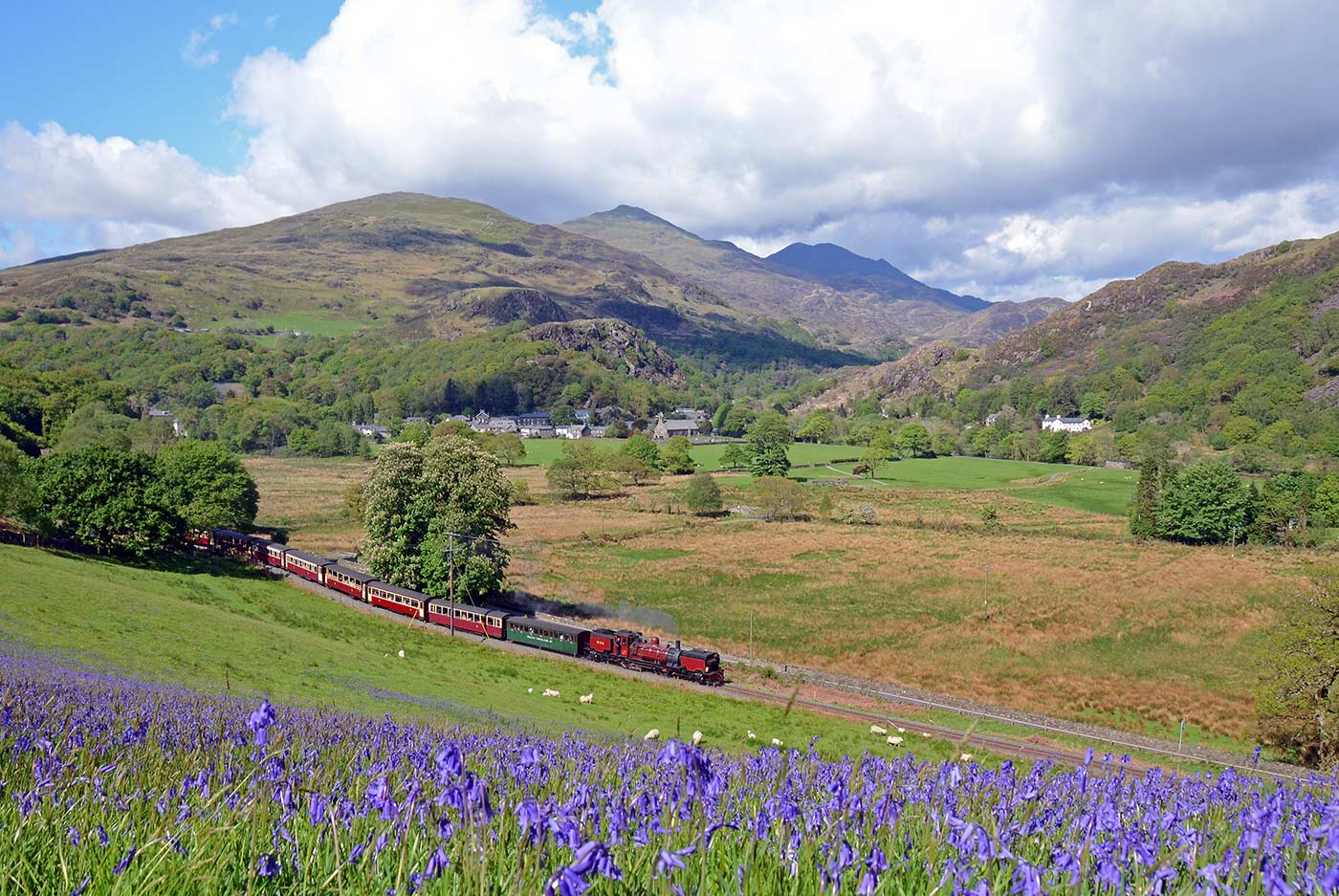
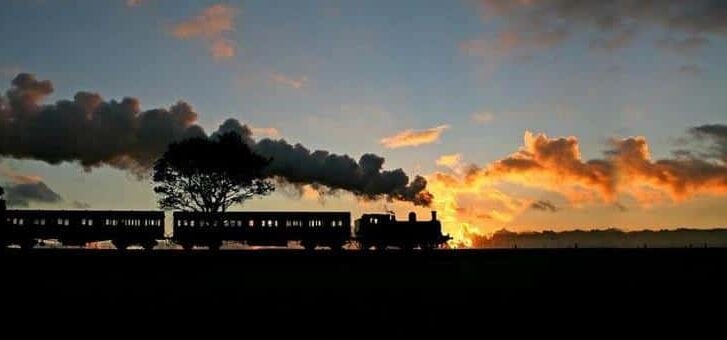
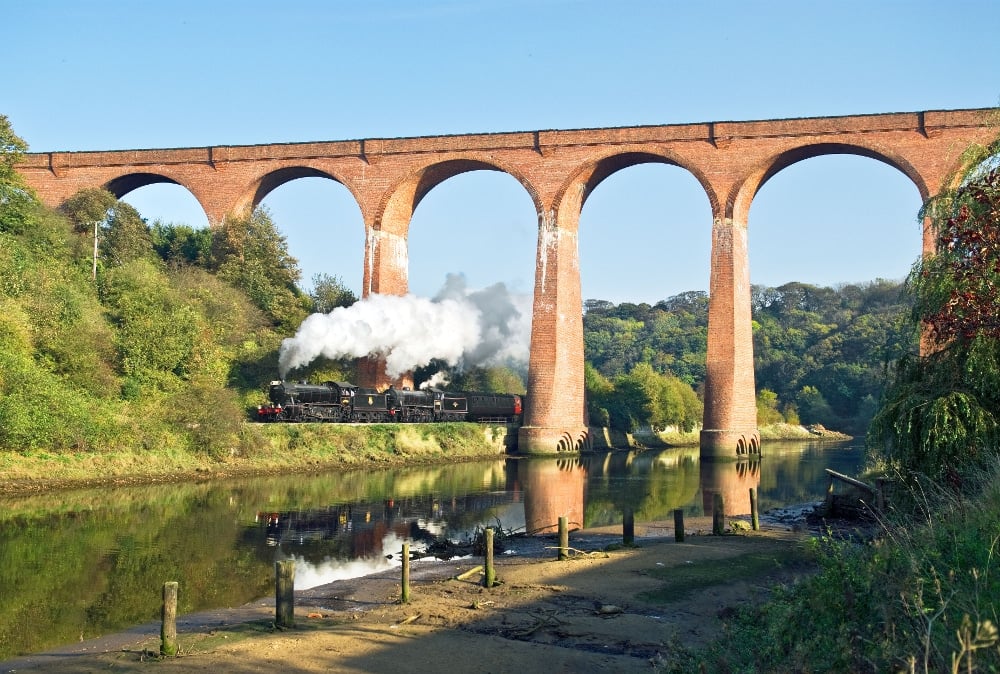
Hand-picked hotels and resorts based on location, customer feedback, value and atmosphere. Please Note: Hotels of a similar standard may be substituted.
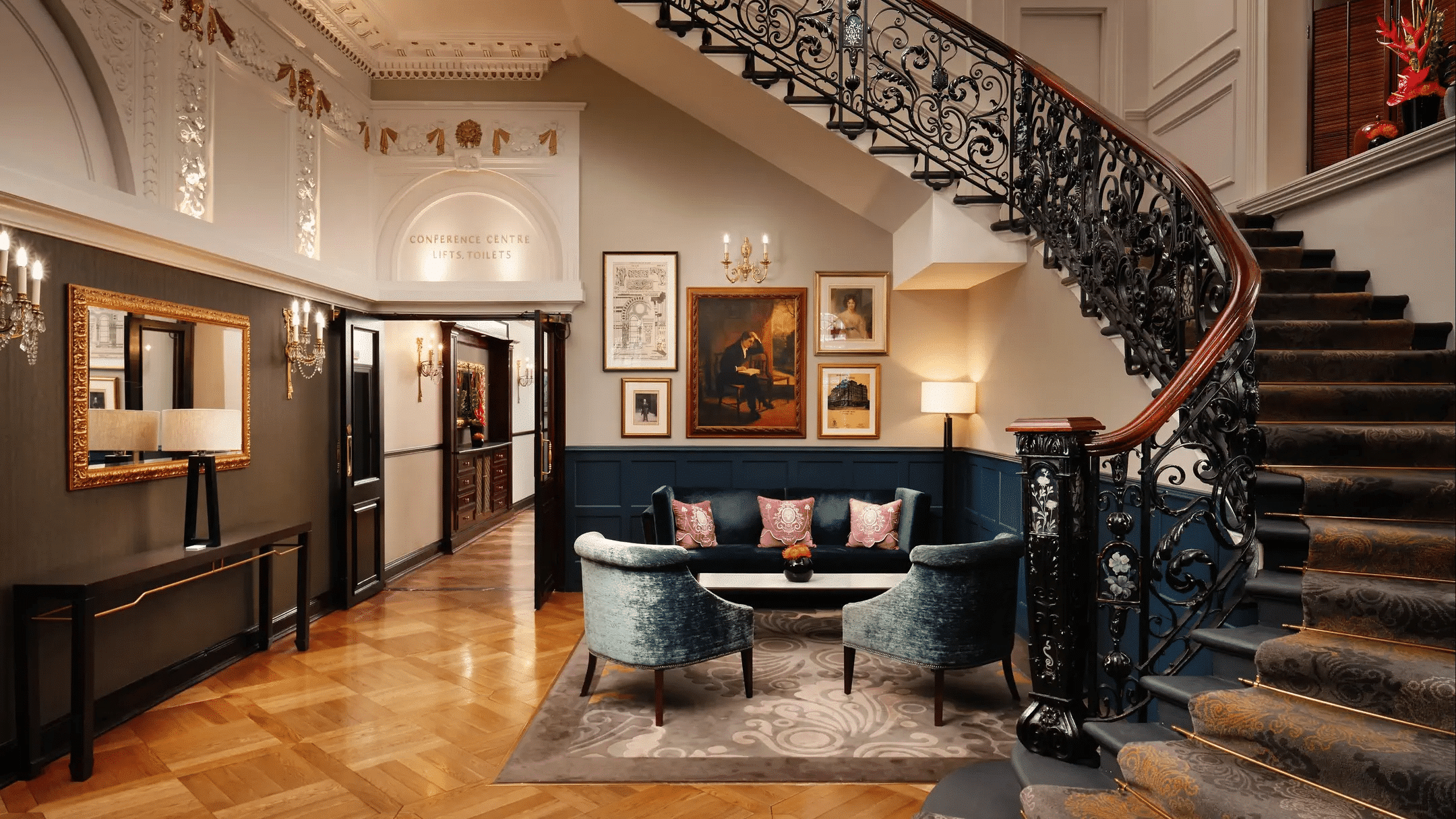
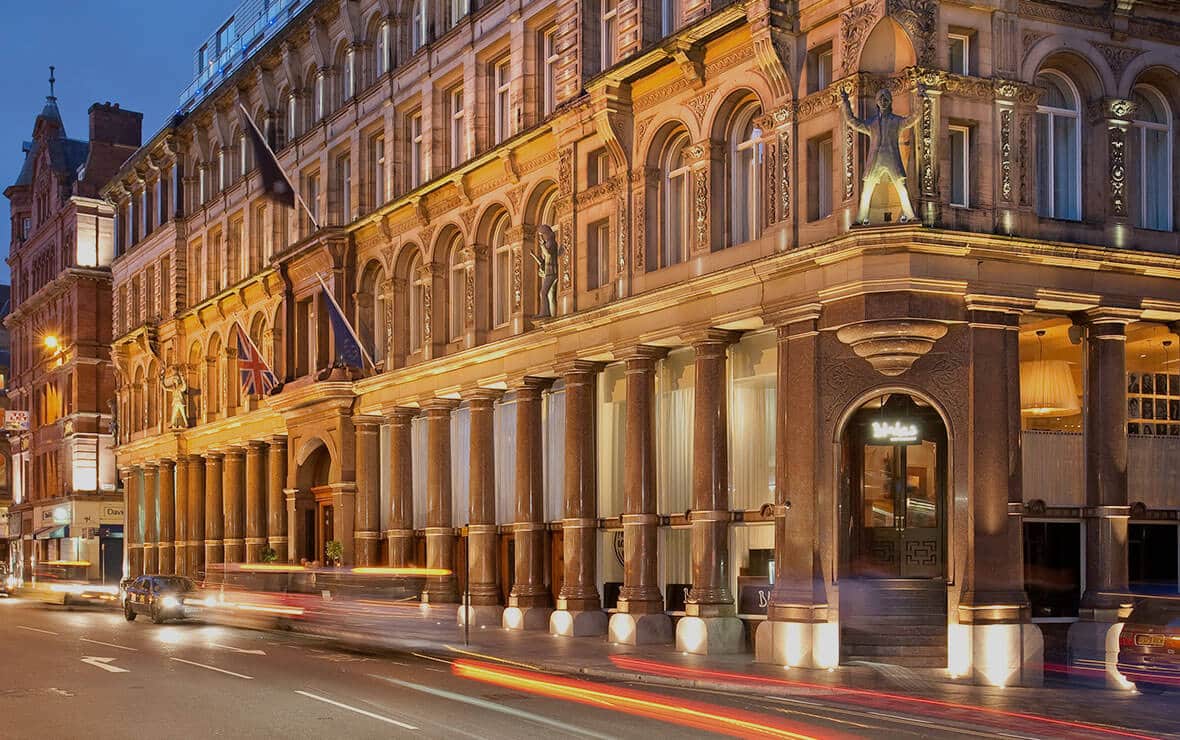
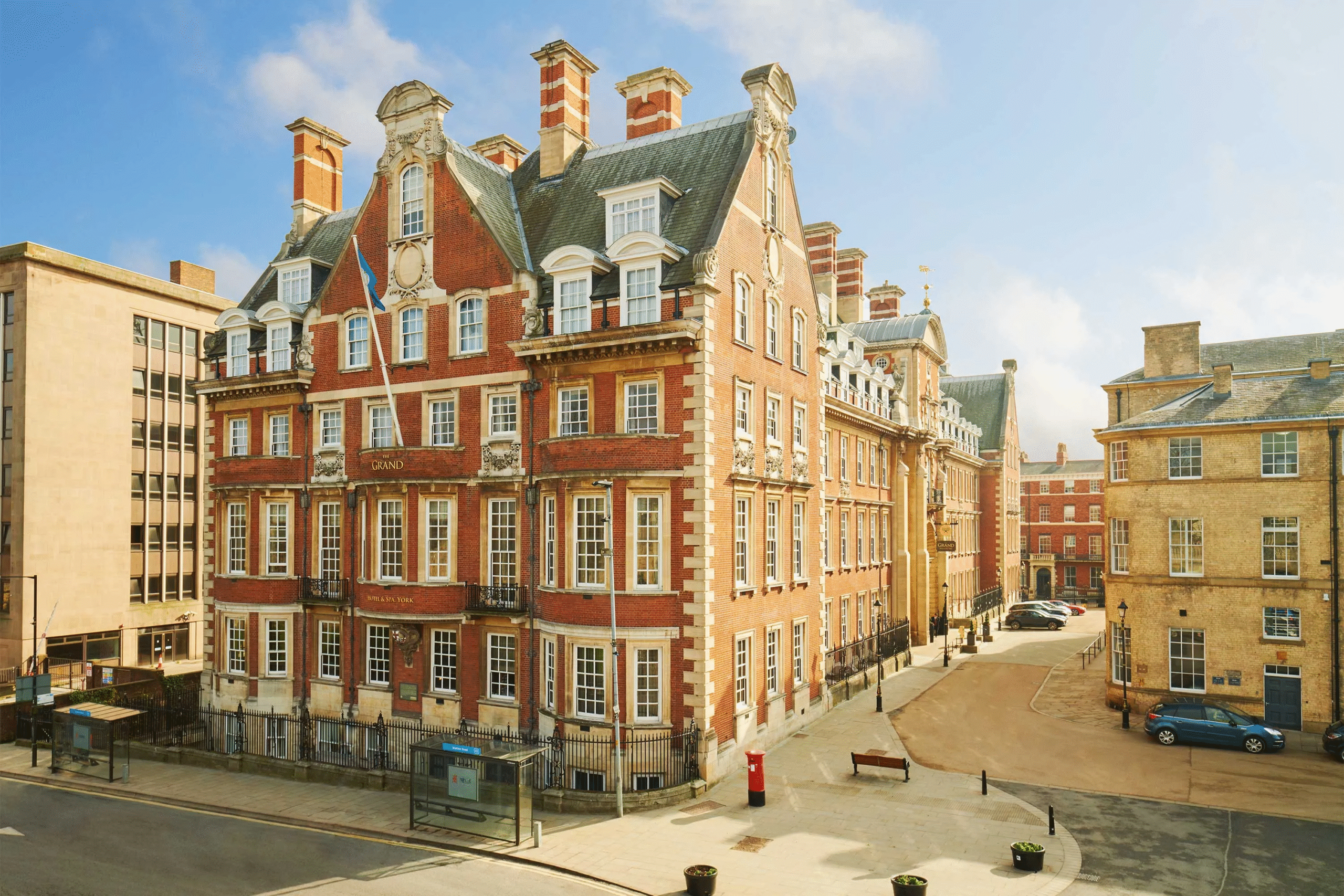
Hear from some of our adventurers that have already ridden the rails with us.
Lorem ipsum dolor sit amet consectetur. Tincidunt convallis magna eu ac eu cursus. In duis fusce risus nec eget habitant massa pharetra. Eros a gravida faucibus lorem.
Reserve your place on this exciting exploration of Icons of England and Wales.
Train traveller, well known TV personality and travel company owner, Scott McGregor, has travelled on some of the world’s most inspiring railway tours and led the most exclusive group adventures to numerous exotic destinations over the years.
“Rustic, character-filled, zig-zagging railways of Burma, opulent hotels on wheels in India South Africa and Sri Lanka, steam-hauled heritage trains in some of the most staggeringly scenic parts of the world, dinky little rail-cars in outback Queensland, bullet trains in Japan, cliff-hugging lines in Switzerland and Norway—if it travels on a rail track, I’m there!”, exclaims self-confessed train travel tragic, Scott McGregor. “In my mind, travelling by rail is still the most wonderful way to immerse yourself in the country you’re visiting. It’s romantic, relaxing and about as much fun as you can have!”.
Aa a child of the last days of steam trains in the busy junction town of Orange, NSW; trains heading in all directions offering temptations and dreams of faraway places, left an indelible impression on a young, inquisitive boy and Scott has been riding the rails in one form or another ever since. While Scott’s acting career of 30 years kept him busy starring in numerous TV shows and stage plays and then as an on-air presenter on programs such as Better Homes and Gardens, Room for Improvement and various pay-TV programs, his passion for railway tours was ever-present. “Presenting a series of Railway Adventure travel programs for Channel 7 was a career highlight”, he says with as much enthusiasm now as he had then.
In 2012 Scott decided to combine three of his passions; travel, trains and presenting, and launched Railway Adventures. Not only does he get to expand his own horizons and indulge his love of train travel, he gets to use his extensive hosting experience and love of people to lead other like-minded travellers on escorted train tours around the world. Since then, Railway Adventures has mounted more than 50 tours from Sweden to Sri Lanka, Tasmania to Transylvania, Britain to Burma and Venice to Vietnam, thrilling over 1,000 travellers. New tours are launched regularly, inspired by new trains, new routes and the growing interest in taking a train to some of the world’s most fascinating places. But you don’t have to be a train ‘nut’ to enjoy a Railway Adventures tour – there’s something for everyone!
Just one example of how Scott finds inspiration for a tour can be found in Outback Queensland. “There you find some of Australia’s most eccentric and appealing trains and together with a mail-plane flight over the Gulf and some interesting local coach and boat trips you have the essence of a quintessential Aussie outback adventure. The sleeper train, The Spirit of the Outback, the Savannahlander and the Gulflander (which has been running on the same timetable for more than 125 years!) are all iconic trains that traverse various parts of the wild Outback, Savannah and tropical rainforest landscapes of the vast state of Queensland. Along with some other special treats not available to the ordinary traveller, Railway Adventures passengers get to do it all!.
One of his favourite journey’s is by private train in Sri Lanka. For 2 weeks every year Scott charters the Viceroy Special heritage train to tour the island on a gentle rail cruise with a lucky group of travellers. Staying in luxury resorts and hotels along the way, his special train travels to almost every corner of the scenic island. “Having a private train at your disposal for an adventure around this magic island is a rare treat and a great way to immerse yourself in the scenery and culture of the country.”, he enthuses. “Our Vietnam tour makes use of private carriages attached to regular trains to explore that great country in comfort and in South Africa we use a variety of trains including the luxurious Rovos Rail and the Royal Livingstone steam train to move from one incredible adventure to another”.
Apart from the obvious joy of seeing a country by train, travelling in a small group of like-minded travellers with a dedicated, experienced tour leader and knowledgeable, English-speaking local guides is what really sets Railway Adventures apart. “The camaraderie that comes from both shared purpose and shared experiences on tour is an important aspect of the journey” Scott adds. “We’ve seen many people become life-long friends from the time they shared together along the line. The best feeling in the world is when I welcome these same people on repeat journeys”.
Along with popular destinations like Switzerland, Scandinavia, Outback Queensland and Sri Lanka, a new breed of more unusual destinations has gained great interest. Java, Cuba, Southern Africa, India and the New England region of NSW are just some of the newer adventures on offer. As for Scott’s next escape, it’s most likely some quality time at Ruwenzori Retreat, his own personal train on the Great Dividing Range near Mudgee, Central NSW. Built from a collection of vintage railway carriages it’s now a boutique tourist accommodation, comprising exclusive Orient Express style comfort for up to 13 guests. “When the travels are done, coming back to my own train in the beautiful Mudgee mountains is the most restorative and magical time for this committed rail romantic”, Scott says.